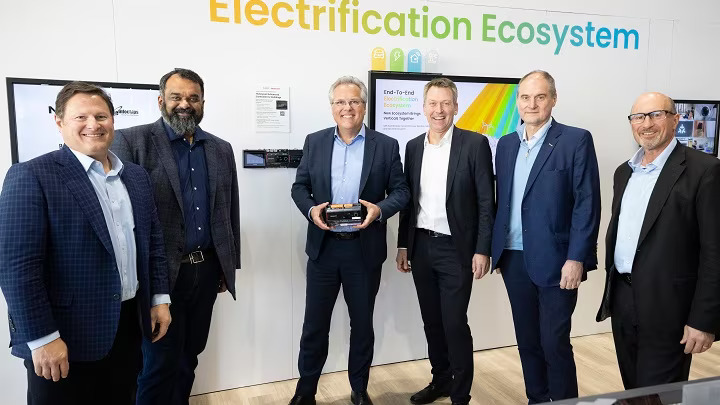Honeywell Partners With Analog Devices and NXP To Improve Building Solutions
Honeywell has announced new partnerships with Analog Devices and NXP Semiconductors. The latest collaborations are focused on improving digital connectivity and energy efficiency in buildings.
At CES 2024, Honeywell announced two new collaborations focused on improving building automation and management solutions. Honeywell has partnered with Analog Devices to improve automation offerings without extensive rewiring of existing systems. The company has also partnered with NXP Semiconductors to expand building efficiency through automation systems.

Honeywell’s latest partnerships focus on improving building solutions for greater future-proofing and sustainability. Image used courtesy of Adobe Stock
Building Automation and Management
There is little difference between Building Automation Systems (BAS) and Building Management Systems (BMS). In general, both terms describe the integration between embedded sensors and detectors throughout a building, such as a large office building or apartment complex.
BAS is a way to integrate HVAC, lighting, access control, fire safety, and numerous other large-building systems into a more comprehensive safety and efficiency network. For example, a fire system detects smoke in a room, so it locks the elevators, closes HVAC dampers, sounds the annunciator, and notifies the fire department.
Another example is to open HVAC controls for occupied rooms rather than blowing cooled, conditioned air into an empty room all weekend. The room’s occupancy can be determined via motion sensors, RFID card access, light switch controls, or power monitoring.
Upgrading Digital Connectivity
Analog Devices is an established player in the industrial automation sphere. The company designs and implements everything from control modules to signal conditioners, power monitoring devices, and sensors. Virtually all industrial and manufacturing markets have been impacted by Analog Devices equipment.
Honeywell has worked with Analog Devices in the industrial and manufacturing sectors for over a decade. The companies’ latest partnership will extend collaboration of BAS/BMS design for both new construction of buildings and retrofitting existing buildings, with a specific focus on energy efficiency.
Honeywell and NXP’s partnership will focus on improving building energy management through smart technologies. Image used courtesy of NXP Semiconductors
Improving Energy Management
The collaboration between Honeywell and NXP Semiconductors will focus on building automation in a different capacity. NXP specializes in neural networks, artificial intelligence, signal communication, and rapid data processing between multiple sensors and actuators. They have been involved in smart city and smart building design, where many control signals are collected, processed, and acted upon to balance power, heating, cooling, and energy consumption loads.
Together, Honeywell and NXP will focus on developing versatile computing systems that can process the large data sets generated in BAS/BMS projects. The primary areas for development are the speed and reliability of communication and processing and cybersecurity, cloud access, and archival of building data.
Better Building Solutions
Honeywell continues to innovate, both in-house and through partnerships with other businesses. By collaborating with other companies, Honeywell doesn’t need to be an expert in everything but can expand their markets horizontally and bring expertise in each new area. Through these types of projects, Honeywell can fill the needs of multiple clients and integrate diverse systems, be they large residential buildings or heavy manufacturing facilities. Ultimately, safer, more energy-efficient facilities are possible based on the collaborations between these companies.

 Facebook
Facebook Google
Google GitHub
GitHub Linkedin
Linkedin









